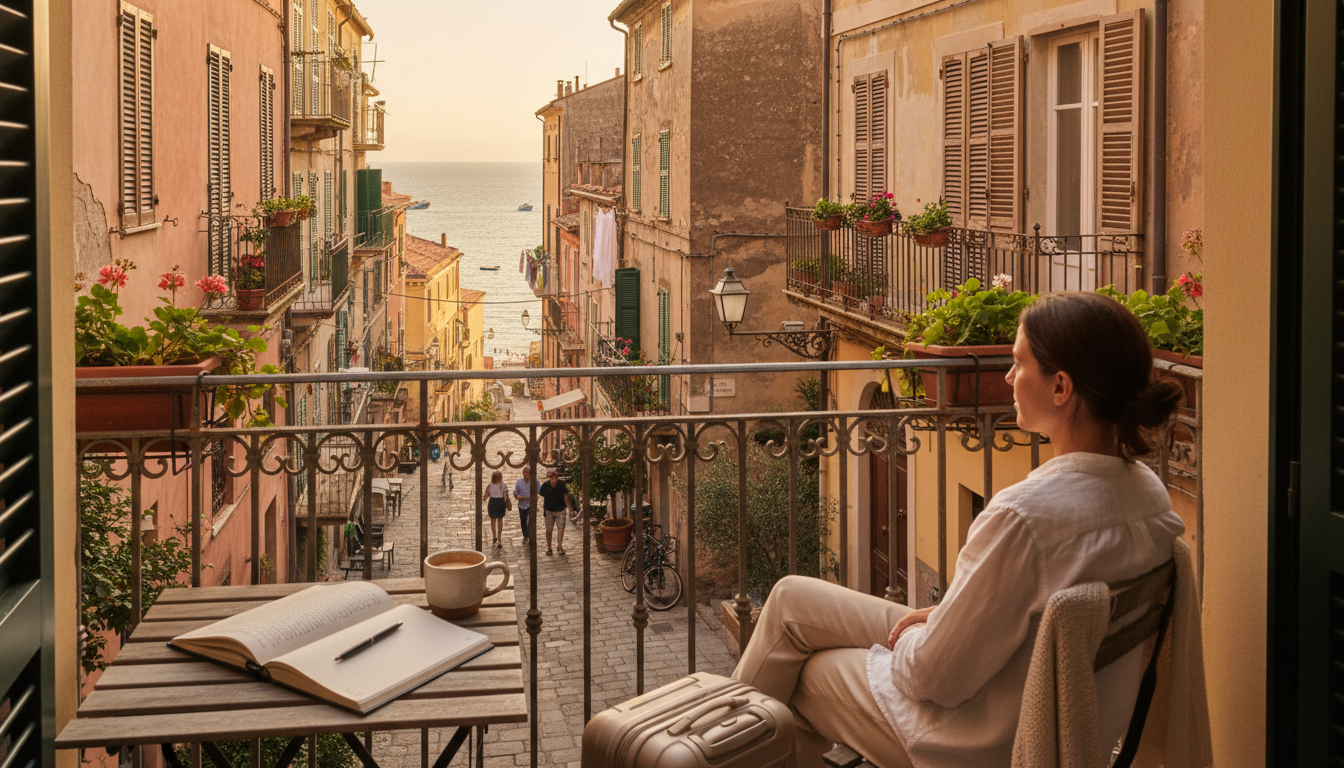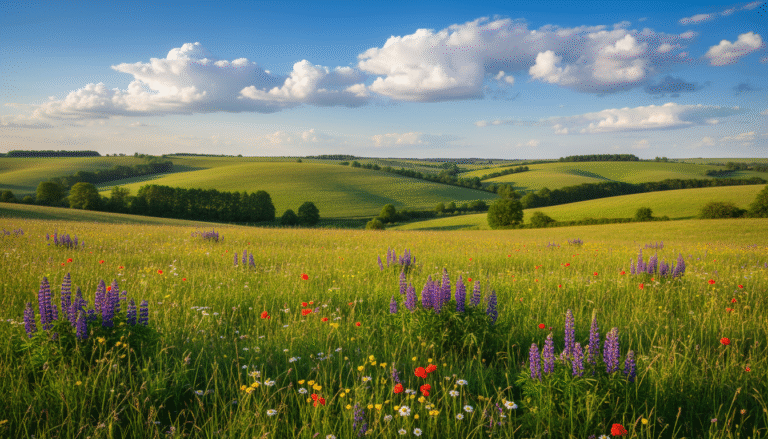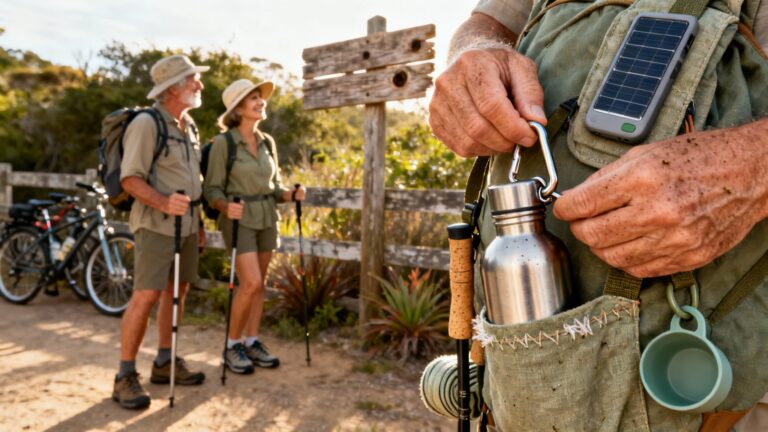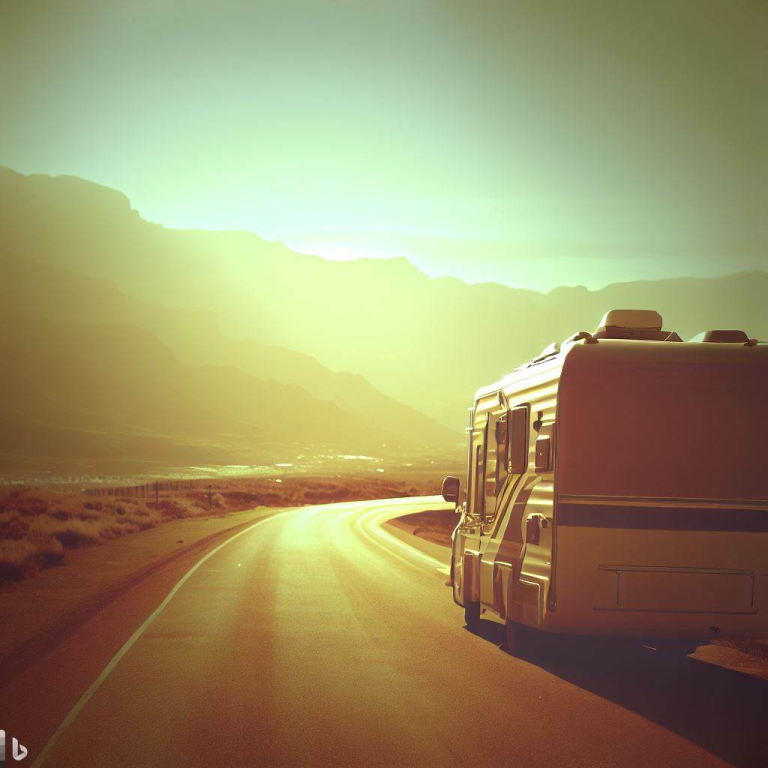New Ways of Travel: How Modern Explorers Are Rewriting the Rules of Adventure by Vanika
Discover new ways of travel that are slower, smarter, and more meaningful—from digital nomad life to micro-adventures and regenerative tourism.
Travel isn’t what it used to be, and honestly, I’m relieved. The new ways of travel people are experimenting with right now are quietly rewriting what a “trip” even is. It’s less about racing around with a checklist and more about staying put, paying attention, and maybe coming home feeling like a human instead of a wrung‑out towel.
For years, I treated travel like a competition. I’d brag about how many cities I could cram into a week like it was some sort of extreme sport. Seven countries in ten days. Museums done at a light jog. That weird airport blur where you’re awake, but your soul is somewhere back at the last security checkpoint.
My worst example: in 2018 I tried to “do” Paris, Amsterdam, and Brussels in five days. It sounds impressive when you say it fast. In reality, I saw the Eiffel Tower from a bus window, inhaled a Belgian waffle while sprinting for a train, and spent way too much time staring at departure boards. I came home with almost 900 photos and, if I’m honest, very few real memories.
At some point, standing in another airport line with cold coffee in my hand, I caught myself thinking: if this is what travel is, I don’t actually like it.
That thought annoyed me. Travel was supposed to be my thing. But instead of ignoring it, I started changing how I move through the world—slowly, clumsily, trip by trip. And that’s how I stumbled into these new ways of travel: not through some big grand plan, but out of sheer exhaustion with the old way.
The Slow Travel Movement: Why Less Is Actually More
You know those conversations where someone says, “Oh, I’ve done Italy,” and what they mean is they walked through Rome in two and a half days and ate one plate of pasta? I used to be that person. Now I kind of want to go back in time and gently tap myself on the forehead.
Slow travel has walked into the room as one of the most important new ways of travel, and its big idea is so simple it almost sounds silly: stay longer, do less, go deeper.
I didn’t adopt slow travel on purpose. In 2021, I flew to Portugal with a very intense Google Sheet: Lisbon, Porto, Algarve. One week total. Color‑coding. Timelines. It was a work of art and also a mild cry for help.
My Lisbon Airbnb host, Maria, made ridiculous pastéis de nata and had the kind of calm that only people who are not rushing through life seem to have. She looked at my itinerary, shook her head, and laughed.
“Why don’t you just stay here?” she asked over coffee. Not “you should” or “you must,” just… why not?
So I tried it. I canceled trains, ate the cancellation fees, extended my stay, and let myself sink into Lisbon for three weeks instead of hopping all over the country.
That’s when I started understanding what slow travel actually feels like from the inside.
By the second week, I had a regular café. The barista would start making my drink as soon as the door opened and he saw me. I learned enough Portuguese at the bakery each morning to embarrass myself a little bit less every day. I’d take the same aimless walks through Alfama at different times and see completely different versions of the same streets—kids playing, neighbors arguing gently out their windows, older men playing cards in tiny squares.
There was a moment where I caught myself giving directions to another visitor. That’s when it hit me: I didn’t really feel like a tourist anymore. I just felt like someone who happened to live here… badly.
There’s research behind this, too, which made my nerdy side happy. A 2023 study in the Journal of Travel Research found that people who spent longer in fewer destinations reported 47% higher satisfaction and way less stress than folks running around with multi‑stop itineraries. Less chaos, more connection. It tracks.
Slow travel is not just “staying longer.” It’s deciding that renting an apartment beats booking a hotel, that shopping at the same market every week matters more than seeing every sight. It’s paying attention to who walks their dog at 7 a.m. and which bakery always has a line for no obvious reason. You’re not “doing” a place. You’re living in it for a minute.
And weirdly, my wallet liked it. When you’re not bouncing between cities, paying for constant transport and random entry fees to things you’re half‑interested in, costs drop. That three‑week Lisbon experiment actually came out cheaper than my original one‑week three‑city sprint would have been. No one was more surprised than me.
After that, the idea of “doing” countries in a blur started to feel… off. Like skimming the first paragraph of every book in a library and then announcing you’re well‑read.
Digital Nomadism: The Office Is Wherever You Want It to Be
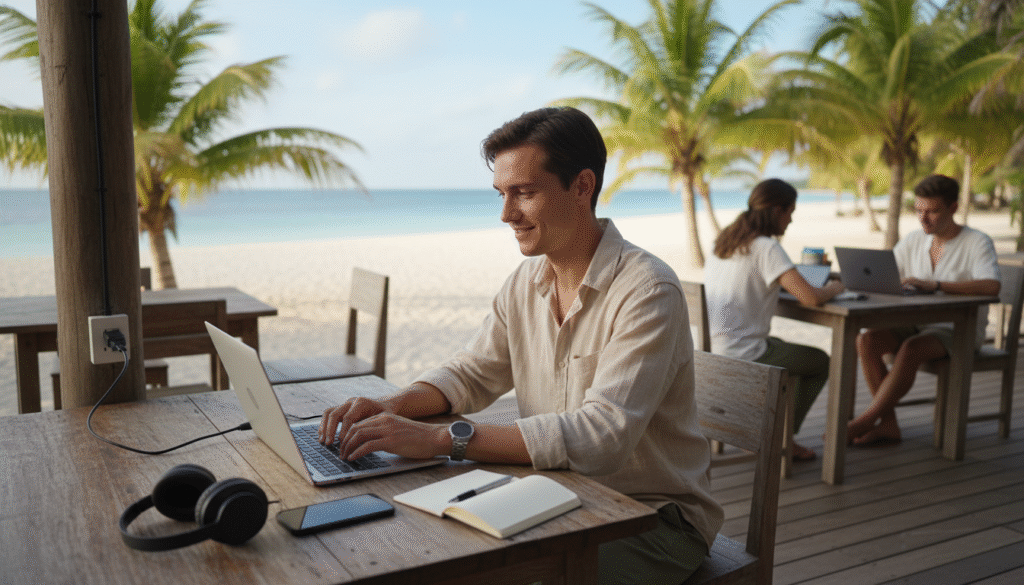
If you’d told my early‑20s self, hunched under fluorescent office lights, that entire countries would one day beg people with laptops to move there, I would’ve assumed you were mocking me. Yet here we are: digital nomadism has gone from weird fringe idea to one of the loudest new ways of travel.
According to a 2024 report by MBO Partners, there are now over 17.3 million American digital nomads. That’s a 131% jump from 2019. Globally, more than 35 million people have basically said, “If my job lives in the cloud, why am I chained to one ZIP code?”
I’ve watched friends opt out of the old pattern in real time. My college roommate Jake used to complain about traffic on his way into the office. Now he splits his year between Bali, Lisbon, and Mexico City, pushing code from cafés and co‑working spaces. His rent in Bali is lower than what he used to pay for a parking spot in San Francisco. Not his apartment. His parking spot.
Governments noticed that people like Jake bring money, skills, and usually an above‑average coffee budget. So places like Portugal, Estonia, Croatia, Dubai, Costa Rica and more rolled out digital nomad visas. These aren’t sketchy workarounds—they’re official ways to live in a country for 6–12 months while working remotely for a company elsewhere.
On good days, this new way of travel looks incredible. Answer a few emails, then go swim. Lunch in a different neighborhood. Finish your work on a balcony while the sun sets over a city you didn’t know existed five years ago.
On bad days? It’s… still work. With extra logistics.
No one posts the picture of themselves trying to look alert on a 1 a.m. Zoom call because their team is in New York and they’re in Thailand. Or the fifth café of the afternoon, hunting for a power outlet and a half‑decent internet connection. Or the weird hollow feeling when you realize you don’t actually belong anywhere because you’re always “just passing through.”
Digital nomad life is one of those new ways of travel that sounds like escape, but if you use it that way, it will call your bluff. If you hate your work, moving it to a prettier backdrop won’t fix much. Your problems are extremely portable.
When it’s done with a bit of self‑awareness, though? It can be a powerful way to take back control of where and how you live. It lets you design a life where your job serves your life, instead of swallowing it.
Regenerative Travel: Leaving Places Better Than You Found Them
This is the part of travel that’s a little less romantic and a little more grown‑up: owning the fact that our trips have consequences.
For a long time, “responsible travel” in my mind meant not being a jerk. Don’t litter. Learn “thank you.” Dress relatively appropriately. That kind of thing. Fine, but honestly, that’s just not being terrible.
Regenerative travel is a different lens. It asks: is there any way my visit could leave this place a tiny bit better when I’m gone?
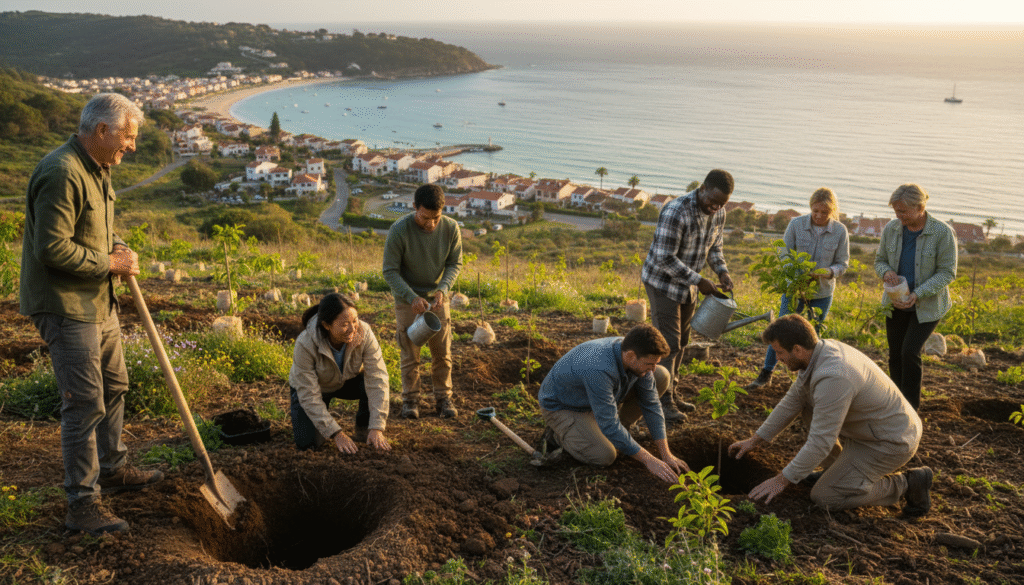
The reason this even came up is because the old version—tour buses, giant cruise ships, massive crowds—clearly broke things. Venice, Barcelona, Maya Bay in Thailand… you probably saw the photos of overcrowded streets and closed beaches. I went to Venice in 2019 and felt weirdly guilty the entire time. Cruise ships would unload floods of people who stomped around for a few hours, bought maybe a gelato and a keychain, and then vanished. The city felt like a stage set with too many actors.
A 2023 report by the Center for Responsible Travel found that 76% of travelers now say they think about a destination’s environmental and social impact when planning trips. In 2019, that number was 43%. That’s not perfect, but it’s a lot more people thinking beyond cheap flights.
So what does “regenerative travel” even look like in practice?
Sometimes it’s simple choices:
- Staying in a locally owned guesthouse instead of a global chain.
- Booking tours with community‑run operators.
- Eating where locals actually eat, not just where the laminated menus are.
- Staying longer so your money and time concentrate on one place instead of skimming many.
And sometimes it’s rolling up your sleeves a bit.
In New Zealand, I spent a week helping with a native forest restoration project outside Wellington. No one gave me a T‑shirt or a certificate. They handed me gloves, showed me how not to murder a sapling by accident, and pointed me at a patch of earth.
Mornings were muddy and surprisingly satisfying: planting, pulling invasive plants, scraping dirt out from under my nails at lunch. Afternoons I was free to go hike or wander into town. By the end of the week, I could name trees I’d never noticed before and understood why certain bird calls were missing from that valley—and how people were trying to bring them back.
It’s not like I saved New Zealand. Obviously. But there’s something grounding about knowing there is a tiny cluster of trees out there that exists partly because you got on a plane and showed up.
There are lots of ways into this new way of travel: organizations like Pack for a Purpose (you bring needed supplies in your luggage), platforms like Worldpackers that connect you with hosts who trade accommodation for help, or just quietly choosing businesses that are clearly run by locals and respectful of their own communities.
It’s less about being perfect and more about refusing to pretend your trip is impact‑free.
Micro-Adventures: Epic Experiences in Your Own Backyard
Not all new ways of travel involve long flights and dramatic life change. Some of them are so small they almost don’t feel like “travel” at all—which is exactly why they work.
British adventurer Alastair Humphreys popularized the term “micro‑adventure.” Strip away the buzzword and it basically means: do something a little adventurous, close to home, that fits inside your actual life.
I was deeply skeptical at first. “Micro‑adventure” sounded like rebranding “go for a hike,” and I did not think I needed branding help to put my shoes on.
But one summer, mostly because I was bored and broke, I tried it. I decided: one micro‑adventure per month. Rules were loose. It just had to:
- Be outside my usual routine
- Involve leaving the house for longer than a grocery run
- Cost less than a decent dinner out
One month I threw a tent in the car, drove 45 minutes out of the city, hiked up a little hill and camped. Nothing epic. No dramatic cliffs. Just a view over a town I normally only pass on the highway. I woke up at dawn, made tragically bad instant coffee, and watched the sunrise over a skyline I usually meet through traffic.
Another time, I rented a kayak and paddled a local river at 6:30 a.m. I saw herons, mist over the water, and exactly zero emails. It felt like I’d slipped into someone else’s much calmer life for a few hours.
One of my favorites was a cheap train ride to a town I’d never visited, only 40 minutes away. I walked around with no plan and ended up talking to the owner of an old diner about how the town had changed over the past thirty years. There was a tiny museum with sun‑faded displays and squeaky floors. It was not glamorous. It was very real.
None of these outings were Instagram‑worthy in the traditional sense. But they did something important: they reminded me that “travel” doesn’t have to mean border control and jet lag. Sometimes it just means looking at familiar geography with unfamiliar eyes.
Research backs this up, too. A study in the International Journal of Environmental Research and Public Health found that regular contact with nature—even short, local breaks—helps lower stress and improve mood. Frequency mattered more than distance. In plain terms: a bunch of little adventures beats one giant blowout once a year.
Micro‑adventures might be the most accessible of the new ways of travel. You don’t need a passport, a massive budget, or months off work. You just need to treat your free evening or Saturday morning as something you can play with instead of automatically filling it with errands.
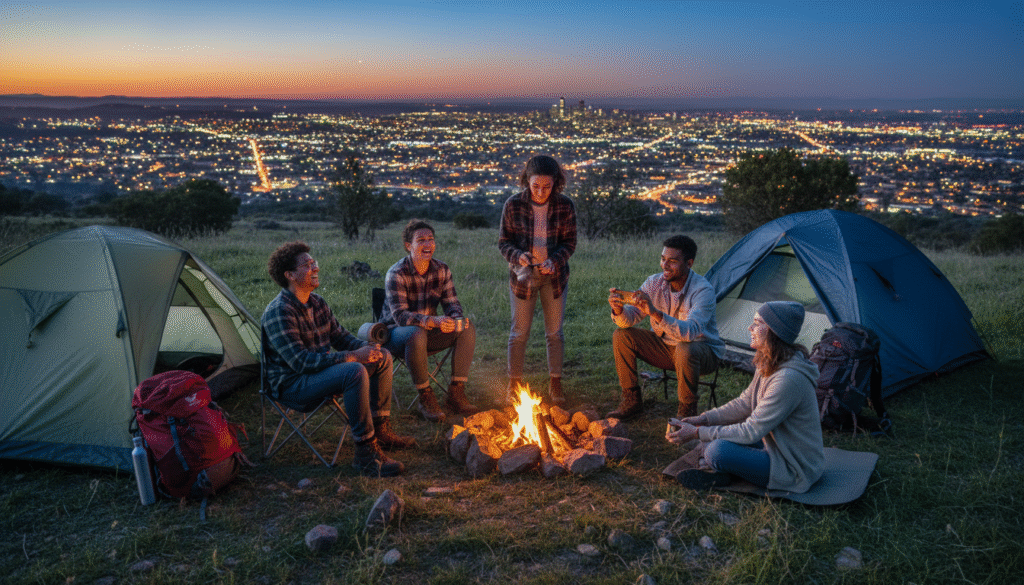
Solo Travel: The Ultimate Journey of Self-Discovery
Solo travel used to trigger concerned looks. “You’re going alone? Are you sure?” Now it’s one of the most talked‑about new ways of travel, especially among people who are tired of compromising on everything from dinner choices to wake‑up times.
A 2024 Booking.com survey said 27% of global travelers planned a solo trip that year, rising to 31% for millennials and Gen Z. So if your social media is full of people taking themselves to other countries, it’s not your imagination.
My first solo trip was to Japan, and I picked it for reasons that, looking back, don’t entirely make sense. The language, the subway system, the cultural differences—I basically chose “hard mode” on my first try.
On the flight over, I cycled through every insecurity:
- What if I get lonely and spend the whole time scrolling in my hotel room?
- What if something goes wrong and there’s no one to help?
- What if I look pathetic eating alone?
None of those things happened the way my brain predicted.
What did happen was quieter. I had days where I did almost nothing “productive.” I sat in a Kyoto temple garden for hours, reading, writing, just existing. I moved at the speed I actually wanted to move, not the speed of the most impatient person in a group.
I also had deeply awkward moments. Ordering food from picture‑only menus led to a couple of “mystery dinners.” I got lost in Shinjuku Station more than once. But every time I figured something out on my own, a tiny voice inside me went, “See? You’re not as helpless as you think.”
I met people because I was alone, not in spite of it. Strangers start conversations with solo travelers in a way they rarely do with couples or groups. An older woman on a train walked me through proper shrine etiquette. A guy running a tiny bar in Tokyo’s Golden Gai scribbled a list of his favorite late‑night eateries on a napkin for me. An Australian backpacker and I ended up wandering neon‑lit streets together one night, swapping stories like we’d known each other for years.
Was it always easy? No. But it was clarifying.
The industry has noticed this wave of solo travelers. More hotels are dropping the “single supplement” nonsense. Tour companies now run trips built around solo travelers who want companionship but not roommate roulette. Apps like Meetup and Couchsurfing make it easier to plug into local scenes when you don’t feel like being a lone wolf.
Safety is a real conversation, especially for women, queer travelers, and people of color. I’m not going to hand‑wave that away. But there’s also a huge amount of practical, specific advice out there now—from which neighborhoods to avoid to what scams are common in which cities. Solo travel forums and groups are full of people swapping notes like, “Here’s what felt safe, here’s what didn’t.”
The secret perk of this new way of travel is that you learn what you actually like, when no one is watching and no one is nudging you in a direction. You learn how you want to spend a day when you’re not performing for anyone else.
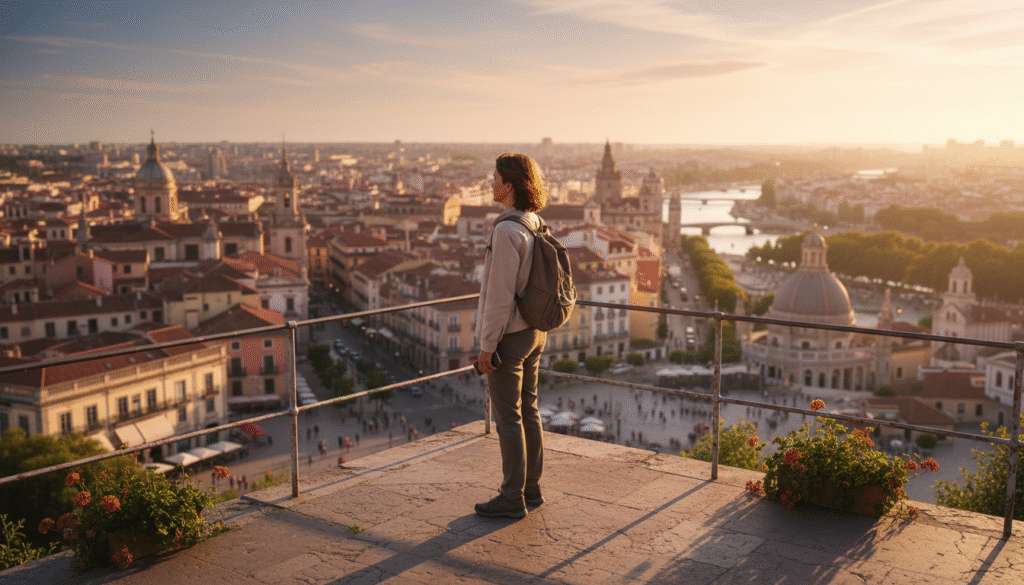
Bleisure Travel: When Business Trips Become Adventures
Let’s be honest: “bleisure” is not a beautiful word. But it does describe a smart approach to travel that more people are quietly adopting. As new ways of travel go, this one is pretty simple: if you’re already traveling for work, why not stretch the trip a little and enjoy where you are?
Companies cover the flight. You tack on a day or two and turn your “work trip” into an “I actually saw this place” trip.
My introduction to this was a conference in Austin. The official event ended on a Thursday. Most of my coworkers booked flights home that afternoon. I opened the airline app, noticed that staying until Sunday barely changed the ticket price, and had a tiny rebellious flicker of a thought: I do not actually have to go home yet.
So I booked the later flight.
I spent those extra days wandering through East Austin cafés, listening to live music, jumping into cold spring water, and eating barbecue that made my previous barbecue experiences feel like lies. That trip still shows up in my memory as “a great time in Austin,” even though the reason I went there in the first place was a fairly standard conference.
A 2023 Expedia Group study found that 89% of business travelers have extended a work trip for leisure at least once, and 94% of millennial business travelers have done it. The same study found that people who do this report less burnout and higher satisfaction with their jobs. It’s harder to resent a work obligation when it comes bundled with a little adventure.
Some companies are waking up to this and quietly encouraging it, especially on long‑haul trips. It doesn’t cost them more, and their people come back less fried.
If you want to try this new way of travel, it doesn’t take much. Before you go, do 15–20 minutes of research: one neighborhood you want to explore, one local dish you want to try, one experience that isn’t just “sit in the hotel bar.” Decide whether to arrive early or stay late. I usually prefer staying after the work part is done so my brain can fully switch modes.
Also: this doesn’t only apply to domestic travel. Conference in Barcelona? Add two days to wander side streets and eat at weird hours. Meetings in Tokyo? Tag on a weekend in Kyoto or a day trip to a hot spring town.
You’re already there. You might as well actually be there.
Van Life and Mobile Living: Home Is Where You Park It
Among all the new ways of travel, van life might be the one with the most curated Instagram presence. It’s all sunsets framed by open van doors, tiny plant‑filled interiors, and perfectly placed enamel mugs of coffee.
The unedited version is different. Still good, but different.
The RV Industry Association says over 11 million American households own an RV now, and van conversions are the fastest‑growing slice. For a lot of people, especially post‑pandemic, the idea of paying a ton of money to stay put in a small apartment suddenly felt less appealing than paying less to have their front yard change every day.
Last year I got to try van life as a guest star. My friend Tom spent eight months converting a Sprinter—insulated walls, solar panels, bed, storage cubbies in every possible space. When he left for a long trip overseas, he handed me the keys and said, “Take it. See what you think.”
So I drove from Seattle down the Pacific Coast Highway to San Diego, with my house essentially strapped to my back.
My first lesson: I own way too much stuff. When you’re squeezing life into a few cabinets, you find out very quickly what you cling to and what you can let go of. Second lesson: morning coffee tastes objectively better when your view is cliffs or ocean instead of the nearest apartment building.
There were nights that felt like a movie—parked near Big Sur with the sound of waves below, or under huge redwoods where the stars looked close enough to touch. There were also nights parked in unattractive lots because every scenic option had “no overnight parking” signs, and I was too tired to risk a knock on the window at 3 a.m.
Van life is one of those new ways of travel that looks like pure freedom, and there is a lot of that. But there’s also the daily puzzle of water, electricity, parking, laundry, and “what was that sound and do I need a mechanic?”
For people like Tom, it’s worth it. His monthly costs are around $800. His commute is “move the van somewhere else.” He’s part of a whole informal community of van‑lifers trading campsite tips, warning each other about sketchy spots, and sharing campfires with strangers who quickly stop being strangers.
You don’t have to throw your furniture on Craigslist to see if van life is for you. Renting a camper or converted van for a week or two is enough to find out whether you like the feeling of your house moving every day—or whether you prefer your adventures with a front door that doesn’t have wheels.
Voluntourism Done Right: Making a Real Difference
Voluntourism—travel plus volunteering—probably has the widest gap between its best version and its worst one out of all the new ways of travel.
At its worst, it can be invasive and performative. The classic example is the short stay at an orphanage, which research shows can actually harm kids by creating a constant cycle of attachment and loss. Or “building” projects where untrained volunteers are doing work locals could have been hired and paid to do.
I had all of this in my head when a friend suggested a sea turtle conservation project in Costa Rica. I was deeply wary of becoming part of some “white savior” photo collage. The only reason I went was because the organization running it was local, long‑standing, and very clear about what the work was and wasn’t.
We were required to stay at least two weeks. There was actual training. The lead biologists were from the area and had been doing this for years before tourists ever showed up with backpacks and good intentions.
Most nights we walked long stretches of beach in the dark, no flashlights unless necessary, listening for waves and watching the sand. When we found a nesting turtle, the biologists told us what to do, step by step. Sometimes that meant collecting data, sometimes moving eggs to safer hatcheries, sometimes just… staying out of the way.
By day we helped with whatever was needed: cleaning, data entry, educational materials, trash pickups. There were no hero shots, no “you saved the turtles” speeches. But there were a lot of small, repetitive tasks that added up.
I came home with a very unflattering mosquito bite pattern and a new understanding of how complex conservation really is.
A 2022 study in the Journal of Sustainable Tourism looked at voluntourism programs that actually helped and found a few common threads: local leadership, long‑term goals, appropriate use of volunteer skills, and real transparency about money and impact.
So if this new way of travel calls to you, it’s worth interrogating it a bit:
- Who started this project, and why?
- Would this role exist without volunteers?
- Do locals want and benefit from this, or is it just designed to make travelers feel good?
- How long has this been running, and can they show any actual outcomes?
When voluntourism is done right, it feels less like “I did this amazing thing” and more like “I got to be a tiny part of something that was already in motion.” It shifts you from tourist to guest to participant.
Wellness Travel: Prioritizing Health and Rejuvenation
Wellness travel used to conjure up images of expensive resorts and people drinking green juice they didn’t look thrilled about. Now it’s one of the new ways of travel I hear about constantly from people who are just… tired. Not “I need a nap” tired. Bone‑deep, “I don’t know how long I can do this” tired.
The Global Wellness Institute valued wellness tourism at $814 billion in 2023 and expects it to reach $1.4 trillion by 2027. That’s a lot of people realizing that maybe “crash for a week on a crowded beach and come back sunburned” isn’t quite enough.
My own entry point into wellness travel wasn’t glamorous. I hit a wall. Proper burnout. I cried in my car more than I care to admit. I woke up tired, went to bed wired, and spent my weekends trying to catch up on chores instead of resting.
My therapist suggested a retreat. I almost laughed. It sounded like something other people did—people who carried yoga mats everywhere and used “honor your truth” in regular sentences.
But what I found in the Colorado mountains wasn’t a luxury cure‑all. It was a pretty plain lodge, shared rooms, group meditations, silence at breakfast, and a strict “no phones” policy that made my hands itch for the first two days.
The first 48 hours were rough. My brain threw everything at me—old worries, weird memories, random to‑do lists. But then, slowly, it started to quiet down. I noticed my feet when I walked. I actually tasted my food. I realized how long it had been since I’d gone a full day without a screen.
By the end, I wasn’t magically “fixed,” but I felt like myself again, in a way I hadn’t for a long time.
Wellness travel can look like:
- A yoga retreat on a beach somewhere warm
- A hiking trip where the point isn’t conquering a summit but giving your body what it needs
- A quiet cabin weekend with no notifications and a stack of books
- A DIY “reset” where you decide in advance: here’s how I want to eat, move, rest, and think for a few days
A 2023 study in the Journal of Travel Medicine found that wellness trips led to measurable improvements in stress, sleep, and overall well‑being that lasted months after people went home. It’s not magic—it’s just what happens when you step out of the noise on purpose and give your nervous system a break.
Even if a full retreat isn’t realistic, weaving a wellness mindset into other new ways of travel helps. Building in unscheduled days. Choosing nature over one more museum when you’re on the edge of snapping. Saying no to the internal voice that wants every minute “used.”
Conclusion: Embracing the Future of Exploration
All of these new ways of travel—slow travel, digital nomad life, regenerative tourism, micro‑adventures, solo trips, bleisure, van life, voluntourism, wellness‑focused journeys—are, in their own ways, answers to the same questions:
What if travel wasn’t about how much we can see, but how deeply we can experience it?
What if it wasn’t just about what we take with us, but what we leave behind?
And what if we came home from trips not just entertained or distracted, but slightly rearranged in a good way?
I don’t think there’s a single “right” way to travel anymore. There’s just what fits the season you’re in.
You might be in a slow‑travel phase, staying in one city for a month. Or a micro‑adventure chapter, where your biggest win is finally exploring that park half an hour away. Maybe it’s your time to try working from another country for a bit. Maybe the bravest thing you could do is book a weekend alone two towns over and leave your phone on airplane mode.
The thread tying all these new ways of travel together is intention. Instead of asking “Where should I go?” maybe the more interesting questions are:
- “How do I want to feel while I’m there?”
- “What do I want to learn about this place—and about myself?”
- “What tiny positive mark could my visit leave?”
The world hasn’t gotten any less complicated. But these new ways of travel feel, to me, like our collective attempt to move through it with a little more honesty, a little more respect, and a lot more awareness.
And that makes me more hopeful about the future of travel than any bucket list ever did.

